- Key Takeaways
- The Psychology of Gold
- what does the color gold Symbolize Historically
- Gold in Global Cultures
- Take The Crystal Cards
- Sacred Symbols Associated with Gold
- Spiritual Essence And Gold Symbolism
- Gold in Modern Life
- The Midas Touch Fallacy
- What Does The Color Gold Symbolize? A Conclusion!
- FAQ
Gold symbolism refers to the meanings, values, and cultural associations linked to the metal and the color gold across history and traditions. Frequently associated with the sun, life force, and divine radiance, gold denotes power, immortality, and sacredness in multiple traditions.
Spiritually, it is said to signify elevated consciousness and shielding. In art and ritual, gold communicates prestige and divinity by means of color, metal, and symbol.
In this post we answer the question “What does the color gold symbolise?” We unpack the sources, viewpoints, and pragmatic wisdom gathered about this most majestic color.
Key Takeaways
- Gold channels warmth, optimism, and confident self-expression—but overuse tips into arrogance and materialism. Use it intentionally.
- Across cultures, gold signals holy illumination, regal authority, and enduring legacy—from gilded icons and domes to royal regalia and funerary art.
- In design and style, gold’s brilliance and luxury lift perceived value; small accents can transform a room or outfit.
- In spiritual traditions and aura teachings, gold symbolism is seen in wisdom and spiritual wealth, often invoked in meditation and ritual.
- In modern branding, gold still signifies quality and trust; pair with neutrals or deep tones for balance.
- Beware the Midas fallacy and the gilded cage: let gold remind you to balance achievement with gratitude, ethics, and service.

The Psychology of Gold
Gold has captured human imagination for millennia because its hue replicates that of sunlight, warm, constant, and life-giving. In psychology, that glow translates as hope, security, and positive anticipation. Folks say they feel better in gold. Retail research finds gold accents increase perceived value and gold trophies communicate accomplishment and social credibility.
On the personality, gold is the color of confidence, charisma, and personal power. This is the kind of leadership that eschews domination in favor of generosity and solid influence. Yet its shadow is real: arrogance, status-chasing, and materialism. That’s the same color that lifts confidence and perceptions of achievement, but unmoored to principles can make the ego balloon.
Worldwide, from Mesopotamia to mystics to the runway, gold rests at this intersection of warmth, enlightenment, and temptation.
Radiance
Gilded altars and temple domes, haloed idols, Buddhist stupas topped with golden sheen, Hindu mandala inlays, Torah crowns, east Islamic calligraphy on gold leaf, ancestral shrines in China gilded with gold, protective amulets in India, reliquaries and chalices in churches.
Gold seems to shine. On paintings, a gold background draws the gaze and suggests worship. On the street, a modest gold pendant can attract compliments and muted swagger.
Throughout the world, there are many traditions that symbolize the color gold as an iconographic shorthand for divine light and higher consciousness. It’s supposed to be protective, even magical, an impression seen in Mesopotamian relics and in Eastern talismans representing wealth and good luck.
Opulence
Gold is the ultimate symbol of prosperity, plenty and acquisitiveness. In Western cultures, it signifies prestige. In the East, particularly in China and India, it is associated with fortune and good wealth, particularly during festivals and weddings.
Jewelry, décor, and fashion depend on gold’s opulent sheen to raise status. A 24‑karat cuff transforms a whole look. A gold-lined room seems fuller even with sparse furnishings.
Yellow gold implies traditional wealth. Rose gold comes across as soft, romantic, and modern. White gold screams cool. All communicate accomplishment, just in different hues.
Imagine royal crowns, golden thrones, Olympic gold medals, orbs of coronations, and palace ceilings. Wedding gold rings emphasize eternity and timelessness.
Wisdom
Globally, gold represents knowledge and enlightenment. It encompasses timeless realities, not passing crazes.
Scriptures and sermons connect gold with illumination—our golden way, the golden ratio, the golden halo in religious paintings. The metal becomes a metaphor for inner richness. When character is refined, it shines.
Scripture, sutras and commentaries invoke gold to symbolize divine wisdom and protection, bolstering the intuition that truth is precious and incorruptible.
Arrogance
Gold’s shadow manifests as greed, pride, and ego. The Midas Touch cautions how unbridled craving makes life difficult.
History and literature reverberate this arc—stashed gold spelling ruin, empires collapsing under abundance, protagonists undone by shimmer not worth.
Balance comes from humility, clear values and purpose. Take care to wear or flash gold as a token of service, not bettering. Let the rich glow turn toward magnanimity and understanding.
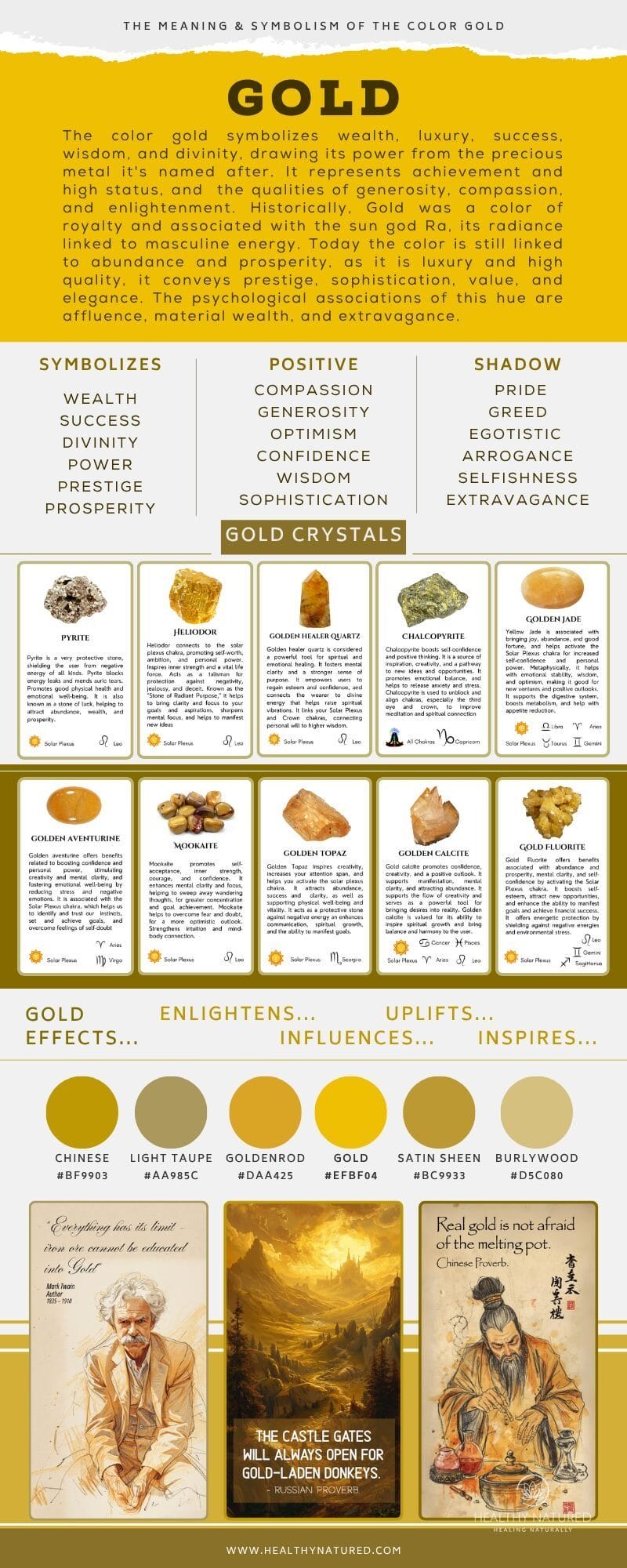
what does the color gold Symbolize Historically
Across cultures and centuries, gold announces worth beyond metal. It journeyed from myth to marketplace, bringing with it symbols of sun and kingship and the wish that something within us would survive. Its scarcity, shine, and imperishability made it an ideal container for might and for worship.
From ancient Egypt and Mesopotamia to Rome, Byzantium, the Islamic caliphates, imperial China, medieval Europe, and into modern finance, gold signified kings, sanctuaries, and measures of commerce.
1. Divine Light
Gold’s association with the sun is old. Egyptians referred to it as the “flesh of the gods,” matching its radiance with Ra’s sustaining force and a monarch’s celestial right. In Greece and Rome, Helios and Sol donned crowns of light. In Mesoamerica, the Aztec sun disk made the same point with other symbols. In Hinduism, gold is associated with gods and used in ceremonies to pay tribute and call forth divine blessings.
Religions deploy gold shades to announce a presence that is other worldly. To Christian thought, gold is a material incarnation of the ineffable—the beautiful and good God—so its radiance is central to worship and holy places. Icons are gilded to suggest this most radiant light.
The Book of Revelation imagines the New Jerusalem with streets “made of pure gold, as pure as glass” (Revelation 21:21).
You see this across traditions:
- Gilded icons, halos, and altarpieces in Eastern and Western churches.
- Torah crowns, breastplates, and pointers in Jewish worship.
- Hindu temple ornaments, idols, and festival adornment.
- Islamic manuscripts illuminated with gold, even as gold jewelry for men is banned, emphasizing humility.
Gold reflects and intensifies light, thus it is said to reflect and radiate wisdom. Human eyes perceive a gleam and the heart deciphers sense.
2. Royal Power
Crowns, scepters, thrones and seals employ gold to advertise authenticity. A ruler’s regalia condenses law, lineage, and state into one flash. Heraldry relies on the color gold to denote nobility and command, and royal palettes match gold with rich blues and reds to anchor status.
Gold’s ancient symbolism is profound. Pharaonic Egypt combined kingship with godliness. Medieval Europe crowned with chrism and circlets. Ashanti courts measured out gold dust. Ming courts preserved imperial yellows.
Gold organizes hierarchies in palaces and courts, from investiture presents to medals that institutionalize service and fidelity.
3. Eternal Life
As gold does not tarnish, it became a metaphor for the immortal. The metal throne where the years do not gnaw. Burials make the case. Tutankhamun’s golden mask (1323 BCE) guaranteed a smooth journey.
Mycenaean grave circles gleamed with masks and cups. Scythian kurgans produced flamboyant animal plaques. Things outlast life and transmit the name. Ancient beliefs are rife with gold at the seam of worlds, binding earth and divine. It was an inheritance, a legacy families could feel.
This eternal quality of the metal has now become a part of the color gold symbolism, along with purity and perfection. Because the properties of gold do not tarnish or corrode they have come to represent spiritual purity and perfection.
This trait is interpreted as an allegory for the soul’s progression toward illumination, purging itself of base material human form and achieving transcendence. It signifies a reminder in color of the possibility of spiritual transformation and our own eternal life.
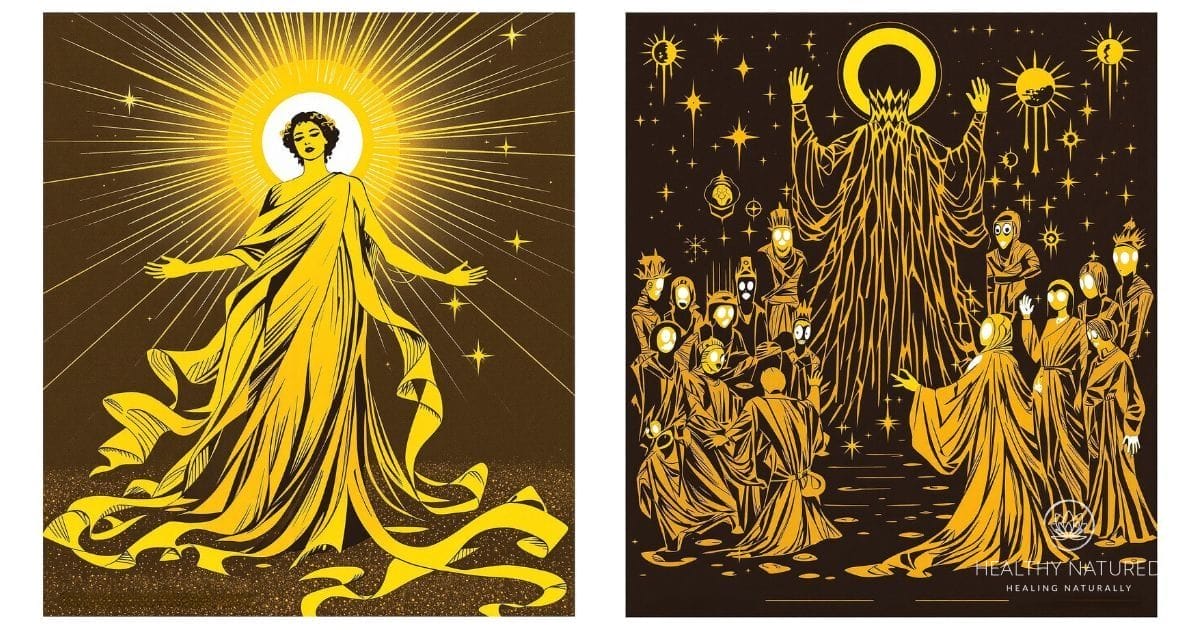
4. Economic Standard
Nothing could symbolize the color gold more than its namesake. Gold, the metal, has for centuries been the decider of the rise and fall of civilisations. Those who had it treasured it, those who didn’t craved it, and went to war for it! Throughout history, until the present day, the amount of this golden metal a country has is the measure of its wealth, status and influence.
A brief history of Gold rise as the economic standard:
- Classical empires used high-value coins for imperial pay and long-distance trade.
- Medieval-early modern: ducats/escudos anchor Mediterranean and Atlantic networks.
- 19th–20th centuries: The gold standard pegs currencies and reserves steer confidence.
- Today, while no formal gold standard, the world reserves still hedge against volatility to hold its value daily.
Gold, the color like the metal, is rich and warm. It glows with a concentrated light that soothes the heart and warms the spirit. Synonymous with opulence and grandeur, gold carries the radiant warmth of the sun, infusing a space with a gleam that can make it feel majestic and welcoming.
From arts to design, gold denotes accomplishment, bringing a note of elegance to everything from fashion to home accents. Its versatility is such that it accents almost any color, highlighting the bold and the subtle alike.
On a cultural level, the color gold is symbolic too, denoting both physical and spiritual abundance and associated with jubilation, and heavenly kindness. It is present in ornate décor and party dresses. Be it the shimmer of a golden sunset or the deep hues of room-gilding, gold evokes happiness and magnificence.
5. Alchemical Perfection
Alchemy regarded gold as nature’s perfect metal, the ultimate goal of transformation. Turning base metals into “noble” reflected inner work. There are texts referring to the philosopher’s stone and using symbolism such as the sun, the lion, and ouroboros.
Many believed the true transmutation was spiritual: clarifying thought, purifying motive, and seeking enlightened balance. Pursuing gold became a blueprint for meaning. Purify, cycle, persist until the core material gleams rustless.

Gold in Global Cultures
Around the world, gold symbolizes purity and proclaims might, sacredness, and value, while conforming to indigenous morals and legends. The ancient Egyptians adorned their tombs with exquisite gold jewelry for eternal life. European monarchs draped authority in gold crowns, and Mesopotamian courts emblazoned status with this precious metal. Numerous cultures valued gold as money and as a vow—wedding bands that resonate with dedication and permanence, reflecting its rich symbolism and cultural significance.
Eastern Views
In India and China, gold symbolizes purity and is considered a holy metal associated with wealth, luck, and enlightenment. This precious metal is thought to possess propitious forces that stabilize homes, fortify businesses, and validate heritage. In Hindu philosophy, gold vibrates with Lakshmi—manifested prosperity—flowing as an expression of perpetual regeneration and moral benevolence. Its symbolic significance extends deeply into various cultures, representing not just material wealth but also spiritual illumination.
In Japan and Southeast Asia, gold frequently frames merit, blessing, and protection, not just wealth. Temples and shrines amplify this symbolism. Gold leaf on Buddhist statues, shimmering stupa spires, and gilded altar fittings elicit awe and wonder. The glow is not just ornamental; it reflects the luminance of the enlightened mind and the light of the universe, connecting the spiritual realm with earthly power.
Festivals and weddings depend on this auspicious color as a public promise of affection and tradition. Bridal sets in South Asia, red-and-gold envelopes in Chinese traditions, and heirloom pieces across the region anchor families during rites of passage. Gold also makes an appearance in traditional Chinese medicine, where it is thought to harmonize and support vitality, although contemporary readers might balance this against modern medical advice.
In Feng Shui, gold calls in abundance and yang warmth. When employed with moderation, it highlights items, metallic hues, or talismanic coins and is rumored to attract stream, not surplus. This rich tapestry of cultural significance makes gold an enduring legacy in spiritual practices across civilizations.
Western Views
Gold signifies triumph, quality, and enduring success. I mean gold medals at international competitions, golden trophies, and lifetime achievement awards that distill prestige into a single color. The message is simple: you reached the highest standard.
Christian halos, chalices, and manuscripts of gold leaf allude to the glory of God. The metal’s incorruptibility befits eternity. European art and architecture from Byzantine mosaics to Baroque altarpieces stage light and transcendence with gold. Royal regalia from crowns to scepters turned rulership into visible theology, tying political authority to divine approval.
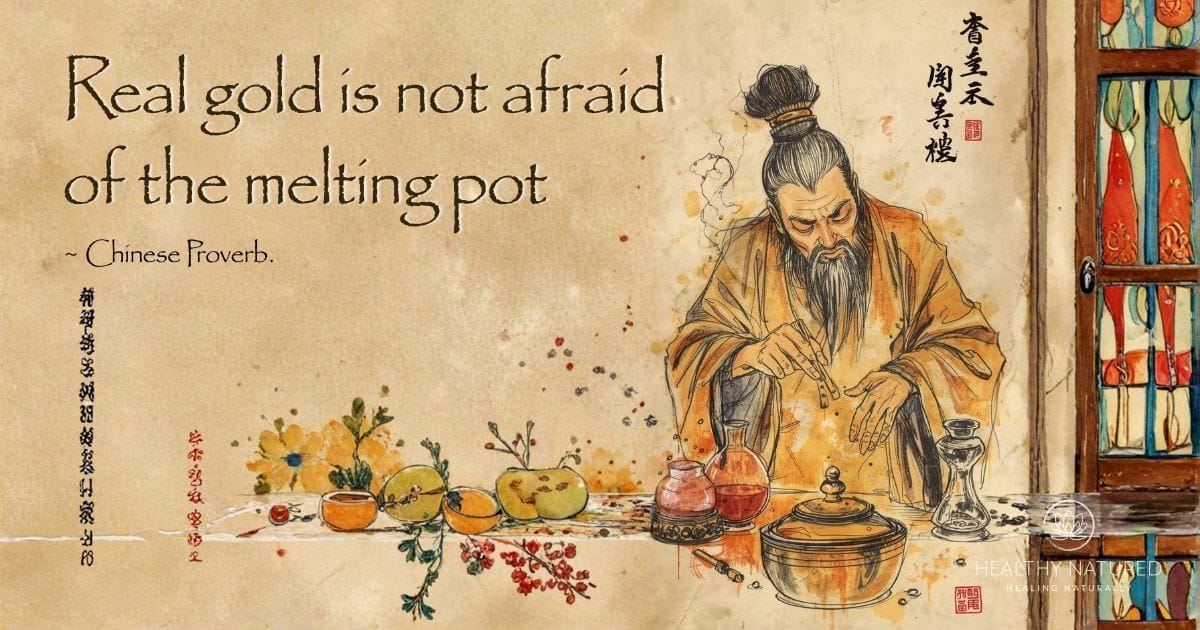
Indigenous Views
To many Indigenous cultures, gold initially belongs to the spirit realm. It is a mediator, a sun-metal that bears prayers aloft and mirrors ancestral presence down to the living. Value lies less in accumulation and more in relationship and reciprocity.
Ritual objects, amulets, and ceremonial dress bear protective purpose! Among Andean cultures, gold associated with Inti, the sun, legitimized power even as it served a religious purpose. In west and central Africa, gold signifies royalty and rite as well as trade, while Akan goldweights hide proverbs that instruct in ethics and commerce.
Certain Mesoamerican cultures did in fact employ gold as currency, but mythologized it as a blessing of the soil, not a stockpile. Myth and memory hold it close: origin tales of rivers bearing “sun tears,” clan narratives where gold marks lineage, and funeral offerings guiding safe passage. The common bond is reverence—gold as a spiritual companion, not just a substance.
- Tutankhamun’s mask (Egypt): divine kingship, afterlife protection.
- Byzantine icons with gold leaf (Eastern Mediterranean): holy radiance and theology in color.
- Akan goldweights (Ghana): trade standards, proverb-lore, social ethics.
- Inca sun disks (Peru): state-cosmos unity, solar worship.
- Imperial Chinese dragon robes with gold thread represent the mandate of heaven and orderly rule.
- Medieval European crowns and reliquaries: sovereignty, sanctity.
- Mayan gold currency and ornaments: exchange, status, ritual power.
- Buddhist gilded stupas in South and East Asia represent merit, purity, and communal devotion.
Gold has been important in spiritual symbolism. With its luminous color and intrinsic worth, gold is a potent symbol of the sacred, success, and illumination.
Take The Crystal Cards
Download our Gold Energy Crystal Cards and have them at hand as a reminder of the benefits of each gold crystal!
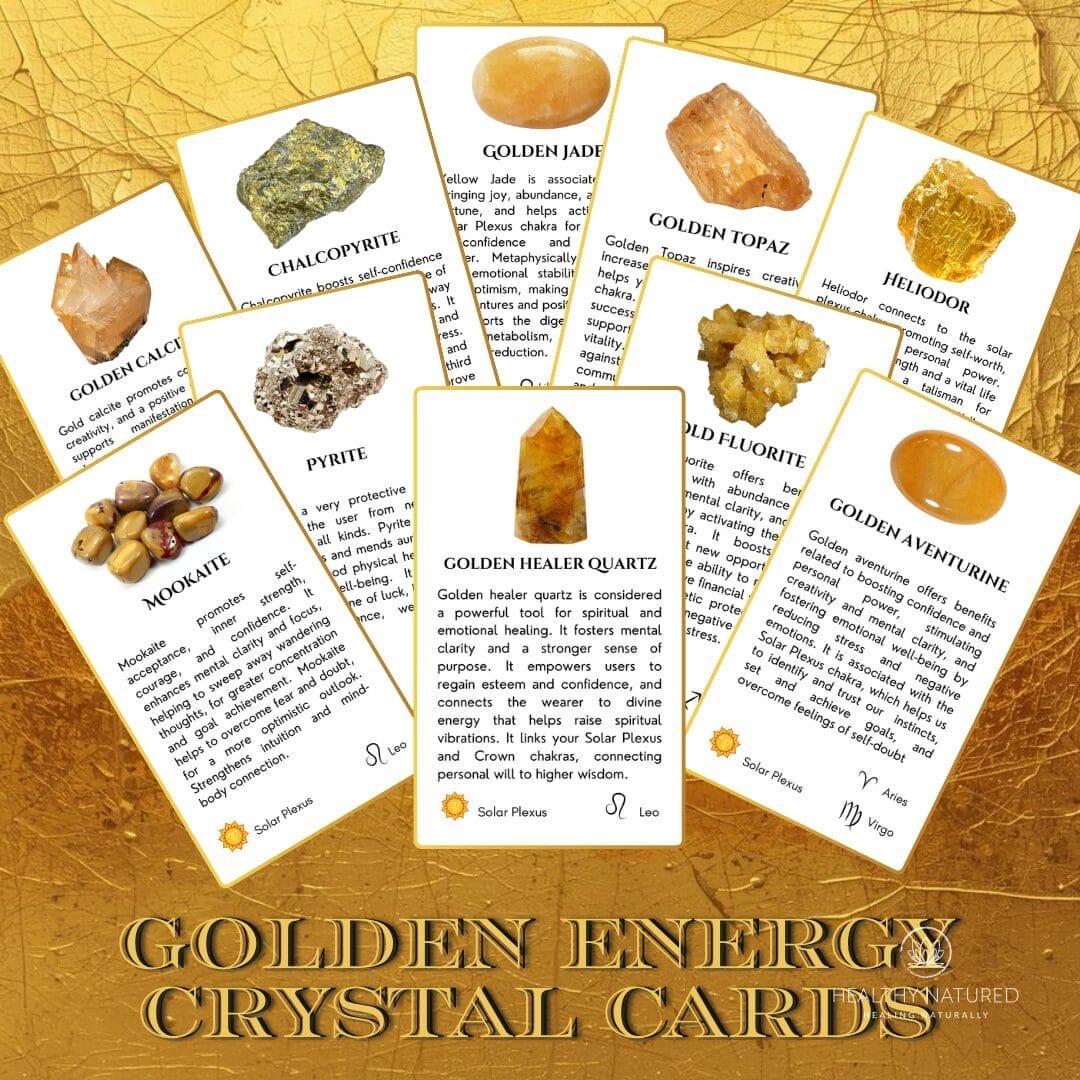
Sacred Symbols Associated with Gold
Gold has been cherished throughout cultures and religions, signifying purity, divinity, and wealth.
One of the most iconic sacred symbols related to gold is the Ankh, an ancient Egyptian hieroglyph which symbolized life and immortality. Frequently shown in gold, the Ankh represents the link between the physical and spirit worlds.
The Hindus revered Lakshmi, their goddess of wealth and prosperity; gold was her symbol. Her photos are frequently strewn with gold jewelry, representative of plenty and luck. Although the Om symbol isn’t specifically associated with gold, it is occasionally depicted in gold to symbolize spiritual awakening and the universe.
The Celtic Knot, representing eternity and interconnectedness, is another motif found in gold jewelry, embodying the sanctity of life cycles and the eternal. In Christianity, the Cross is sometimes adorned with gold to represent the glory of Christ and the hope of salvation.
These symbols are a testament to man’s long history of holding gold in spiritual regard, not only as a substance but as a token with spiritual meaning, representing our hopes, our faith, and our relationship with the divine.
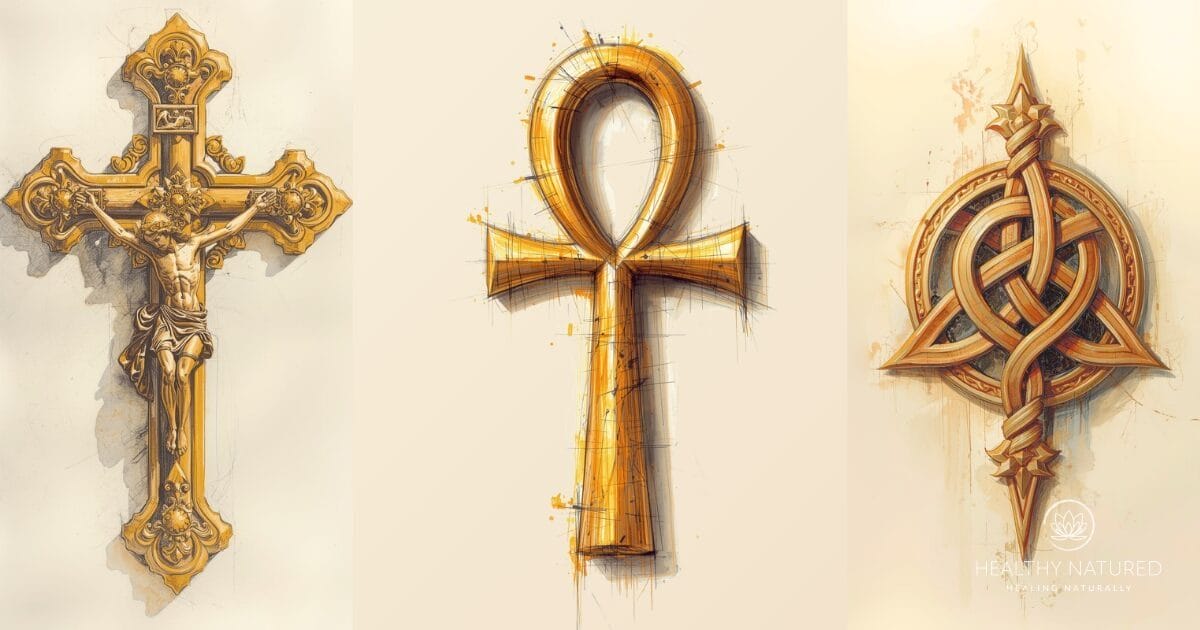
Spiritual Essence And Gold Symbolism
Gold is still considered a color for spiritual energy and illuminated consciousness. Among cultures, it represents purity, eternity, and timeless truth, which is why holy icons and ceremonial implements radiate with its shine. Ancient Egypt named it the flesh of the gods, particularly associated with Ra.
Biblical texts present it as a symbol of godliness, royalty, and immortality. Alchemists called it incorruptible. In fact, gold spans the earthly and the transcendent, implying that matter may mirror spirit without being reduced.
Employed in prayer beads, icons, altar vessels and temple crowns, gold grounds devotion in luminescence and resilience. From Solomon’s Temple to Byzantine mosaics to the gilded statues in Hindu and Buddhist shrines, gold plays a significant role in spiritual practices.
In meditation, others imagine a golden orb at the heart or crown to summon lucidity. Healers might stabilize will by placing a wafer-thin gold disc over the solar plexus or use gold-laced oils to anoint thresholds in ritual. Rituals of refinement—“gold refined by fire”—demonstrate that proven faith is holiness.
All in all, these practices connect spiritual abundance with integrity, wisdom, and calm presence.
Aura Color
Golden aura is frequently interpreted to mean mastery, meaning consciousness refined by compassion. It mirrors a soul on fire for mission and a spirit humble enough to minister without pride.
When it is, it implies bounty and sheltering favor, as a warm lea about the form. They say it is durable, not attention-grabbing.
Shared characteristics of the gold aura, among others, are tempered authority, sage pragmatism, devoted mentorship, and charisma to inspire communities rather than control them. It believes humbly and with focus.
To strengthen a gold aura, hold a simple breath practice with a gentle smile. Imagine a sun at the sternum spreading 360 degrees. Don’t wear a conspicuous gold ring or pendant while praying.
Keep your promises and some volunteer hours. Integrity nourishes the tint more than exhibition.
Soul Color
As a soul hue, gold symbolizes both purity of purpose and unyielding honesty. It represents an intuitive connection to timeless wisdom. It marks values that transcend trend or approval.
These golden aura souls are claimed to be sagacious and kind. They can opt for servitude quietly, leading others in the direction of serene solution.
Compared to indigo, which is intuitive and investigative, or violet, which is mystical and visionary, gold focuses on embodiment and ethical follow-through. It renders wisdom practical.
Reflect by listing core values, observing where behavior strays, and selecting one to fix this week. Tiny, regular check-in alignment keeps the spirit pure.
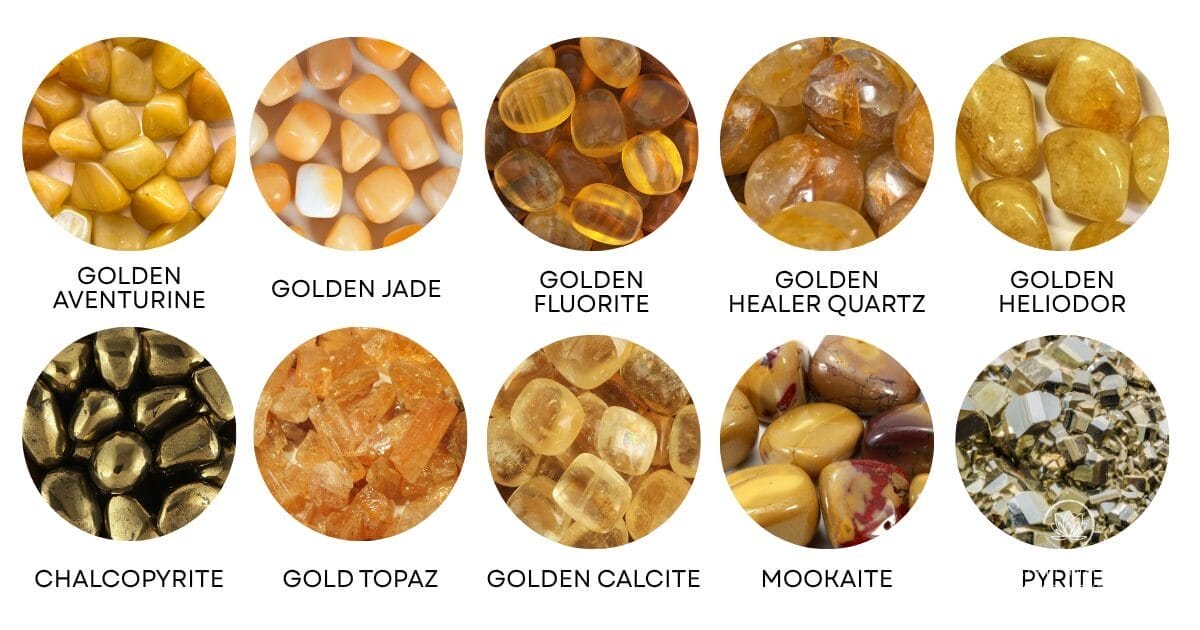
Color Gold and Crystal Energy
Use these golden-hued stones to embody prosperity, courage, clarity, and radiant confidence.
| Pyrite | Attracts prosperity and success; protective; boosts willpower and strategic focus. | • Chakra: Solar Plexus • Zodiac: Leo, Aries, Sagittarius |
| Golden Healer Quartz | “Master healer” that amplifies energy, clears blockages, and raises vibration for spiritual connection. | • Chakra: Crown, Solar Plexus, Sacral • Zodiac: All signs |
| Golden Jade | Harmonizes emotions, invites prosperity and wise decision-making; supports steady growth. | • Chakra: Heart, Solar Plexus • Zodiac: Leo, Virgo, Libra |
| Golden Aventurine | Sparks creativity, motivation, leadership; a stone of opportunity and momentum. | • Chakra: Solar Plexus • Zodiac: Aries, Leo |
| Mookaite | Grounded vitality and adaptable courage; supports clear decisions and emotional steadiness. | • Chakra: Root, Solar Plexus • Zodiac: Virgo, Scorpio, Aries |
| Heliodor | Courage, optimism, life-force; aligns confidence with purpose (“gift of the sun”). | • Chakra: Solar Plexus, Crown • Zodiac: Leo, Gemini |
| Golden Topaz (Imperial) | Manifestation, generosity, joy; clarifies intentions and fuels follow-through. | • Chakra: Solar Plexus, Sacral • Zodiac: Sagittarius, Leo, Scorpio |
| Golden Fluorite | Focus, learning, organized clarity; balances energy and dissolves mental fog. | • Chakra: Solar Plexus • Zodiac: Capricorn, Pisces |
| Golden Calcite | Cleansing, motivation, healthy self-worth; helps overcome procrastination. | • Chakra: Solar Plexus • Zodiac: Cancer, Leo, Pisces |
| Chalcopyrite | “Mystic’s stone” for perception, meditation, and energetic unblock; invites abundance. | • Chakra: Crown, Third Eye, Solar Plexus • Zodiac: Capricorn, Taurus, Virgo |
How to work with them: Wear near the Solar Plexus (confidence), place on a work desk for prosperity & clarity, or pair Pyrite + Heliodor for empowered leadership; Golden Healer + Golden Calcite for gentle, sustained vitality.
Dream Meaning
Dreams with gold often signal spiritual awakening or a hidden talent at last ready to be deployed. The metal symbolizes wisdom that will not corrode.
Frequent scenes: finding a gold coin represents latent skill surfacing, wearing a gold ring symbolizes commitment or covenant, a stolen golden object indicates fear of losing worth, melting gold signifies refinement through difficulty, and a golden path illustrates guided next steps.
These sorts of dreams can indicate impending validation, well-timed funding, or an exact concept to prototype. Notice who is there and how the light plays.
Maintain a dated dream journal. Jot down motifs, sensations upon waking, and any real-world reverberations within 72 hours. Patterns expose the message’s form across time.
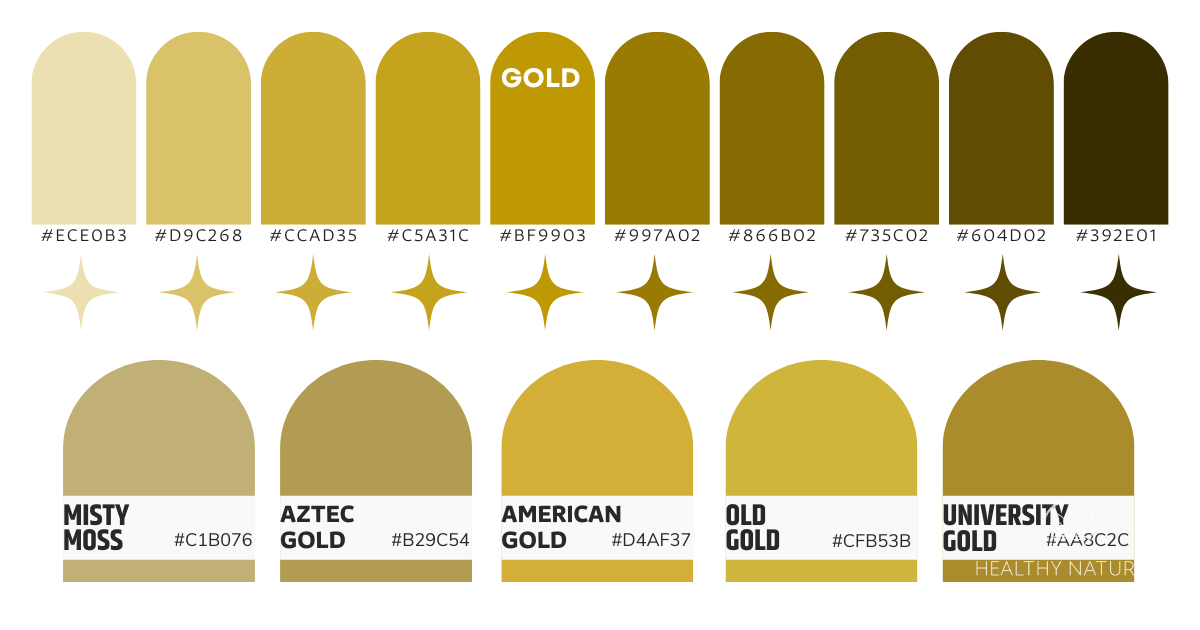
Gold in Modern Life
Gold retains its symbolic charge in everyday decisions and grand decisions. It represents wealth in much of the East, its rarity determines worth and its hue indicates status. Designers, marketers and stylists depend on gold to border brilliance and investors count on it as a reliable ballast.
Popular uses today:
- Technology: connectors in smartphones, CPUs, and aerospace components for reliable conductivity.
- Home décor: brushed-gold faucets, picture frames, lamp bases, and cutlery.
- Personal accessories: watches, rings, eyewear accents, phone cases, and handbags.
In Design
Gold functions most effectively as a highlight, not an inundation. Just a sleek brass handle here, a gold-leaf mirror edge there, or a thin picture frame can enhance a room from bare to buffed without bling. In tiny apartments, one gold floor lamp warms neutral palettes and adds understated bravado.
Metallic gold glints and comes across as vibrant, perfect for directional symbols, app micro-interactions, or packaging foils. Matte gold mellows glare and harmonizes with textured papers, wall paint, or brushed fixtures. Gold leaf feels ceremonial. It is hand-applied, slightly irregular, and perfect for feature walls, signage, and art where you want that ritual mood.
Balanced pairings:
- Deep navy, charcoal, forest green for modern luxury
- Soft blush, stone, warm gray for calm elegance
- Ivory, walnut, and black for timeless contrast
- Jewel tones, such as emerald and ruby, are favored for festive opulence in Indian and Chinese celebrations.
| Name | Pantone | RGB | Hex |
|---|---|---|---|
| Metallic Gold (approx.) | 872 C | 212, 175, 55 | #D4AF37 |
| Old Gold | 7753 C | 153, 122, 39 | #997A27 |
| Rose Gold (digital) | 7586 C | 183, 110, 121 | #B76E79 |
In Commerce
Gold signifies luxury and exclusivity in advertisements, seals, and loyalty tiers. A sliver of gold on a box edge whispers ‘care’. So many luxury categories employ it, including wristwatches, skincare lids, perfume collars, credit cards, limited sneakers, and celebratory gift packaging in Lunar New Year sets echoing good fortune wishes.
Psychologically, gold colors elevate value and credibility through associations of rarity and craftsmanship. That magic comes from genuine scarcity and hundreds of years of connectedness, from Gold Rushes to contemporary trophies.
Finance leans on substance: gold bars, coins, ETFs, and strategic reserves. Central banks have been net buyers since 2010, with record acquisitions in 2022, and continue to bolster gold’s appeal as a store of value, universal money, and inflation hedge. In recessions, demand increases as investors look for a safe haven.
What Does The Color Gold Symbolize In Attire
Gold jewelry or golden colored fabric says status and celebration, as well as warmth and assurance in somewhat minimalistic doses. Gold wedding bands still symbolize eternal connection and collective wealth across the world.
Occasions: weddings, religious festivals in India and China, award ceremonies, milestone birthdays, and New Year events. Flash gold shimmers on red carpets. Vintage gold has a heritage taste. Rose gold feels accessible and contemporary.
Style tips:
- Everyday: tiny hoop earrings, a slim chain, and a watch with a gold index—keep metals consistent.
- Work: Matte gold hardware on shoes or bags. Steer clear of bling saturation.
- Evening: one hero piece—a statement cuff or metallic dress—balanced with muted tones.
- Textures matter: satin glows; sequins spark; brushed finishes whisper.
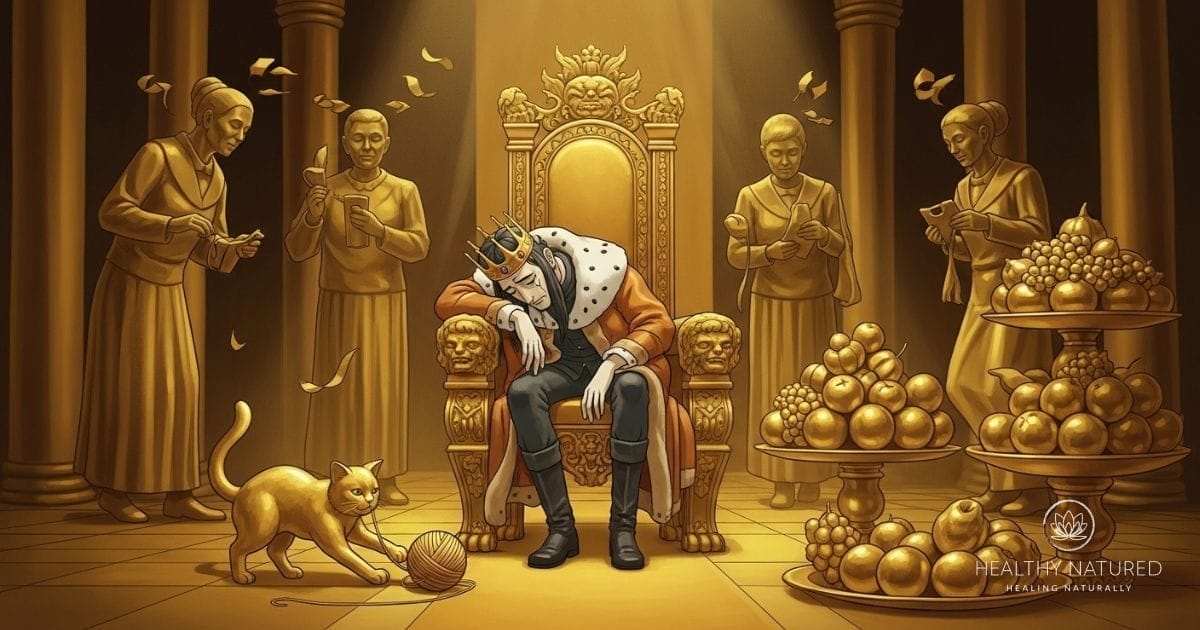
The Midas Touch Fallacy
Gold offers both safety and sparkle, often seen as a powerful symbol of prosperity and purity. However, the Midas Touch Fallacy illustrates how this precious metal can conceal hollowness, undermining health, friendships, and purpose in one’s spiritual journey.
A Cautionary Tale
King Midas requested that all he touched become gold. His wish was fulfilled and before long, his bread, water and even his loved ones were turned to golden statues. Some versions end with starvation, a stark image: well supplied with gold, yet dying of hunger.
I think G.K. Chesterton was right to describe Midas as ‘a failure of an unusually painful kind,’ not a success story. The symbolism is clear: not all that glitters is valuable. Again, a golden apple you cannot eat is not food. A Midas touch fallacy.
The legend has become shorthand for greed and foolhardy ambition. We hear reverberations in CEOs who pursue revenue instead of confidence or celebrities who barter privacy for acclaim and sense more isolation than ever.
An easy ritual assist. List your top five: health, relationships, purpose, learning, livelihood. If wealth crowds out the first four, rebalance before your blessings turn brittle.
The Gilded Cage
Gold can calm anxiety with its consistent mass. Its shine can limit vision. The “gilded cage” shows up in novels, films, and boardrooms—a life buffed to perfection on the outside and restricted on the inside.
In real life, ownership can own us. The luxury home miles from friends, the watch you fear to scratch, and the failure-proof schedule constrain freedom and honest expression. You may wear the clothes, but deferentially mumble, softly chuckle, and intelligently hesitate.
Try counterweights instead. Book one “unmonetized” hour every day—no measures, no production. Rotate status items for experiences: language classes, trail walks, or volunteering. Practice anonymity: give without credit. Notice how space returns to your chest.

True Value
Genuine worth combines spiritual lucidity, emotional balance and moral rectitude with economic adequacy. Gold’s most exquisite symbol isn’t price per gram but constancy, warmth and incorruptibility, virtues we can exemplify.
Appreciate gold. Read it as a reminder: Let your actions be steady, your character untarnished, your generosity radiant.
Practical cultivation:
- Gratitude journaling: three specifics each evening.
- Generosity: set a monthly giving percentage in one currency.
- Wisdom: One reflective walk per week, 5 km device-free.
- Boundaries: define a “good enough” lifestyle to prevent drift.
- Alignment: Before big decisions, ask, does this honor my values?
When riches sustain grace and honor and ministry and awe, it is a channel, not a cage.
What Does The Color Gold Symbolize? A Conclusion!
Gold carries a clear throughline across time: value, vitality, and meaning shaped by culture and context. Psychology connects its warm gleam to reward and assurance. History associates it with might and holy covenant. For cultures worldwide, gold signifies rites of passage, protection, and belonging. Spiritual traditions consider it a channel for lucidity and transcendental mission. Contemporary existence continues to rely on gold for electronics, investments, and fashion. The Midas Touch fallacy keeps us remembering that riches without insight constrict life instead of broadening it.
All told, gold is most effective as a looking glass. It mirrors what we value—prestige or caretaking, self-importance or magnanimity. Opt for harmony instead of overload, then allow gold to symbolize the principles you wish to nurture.





